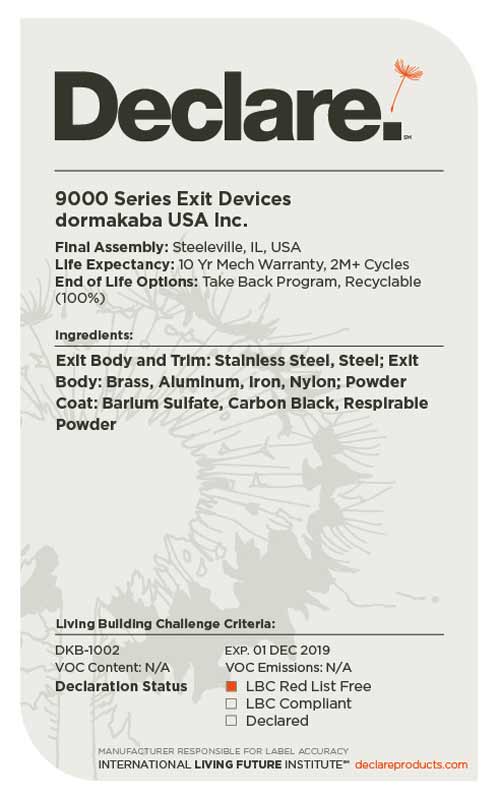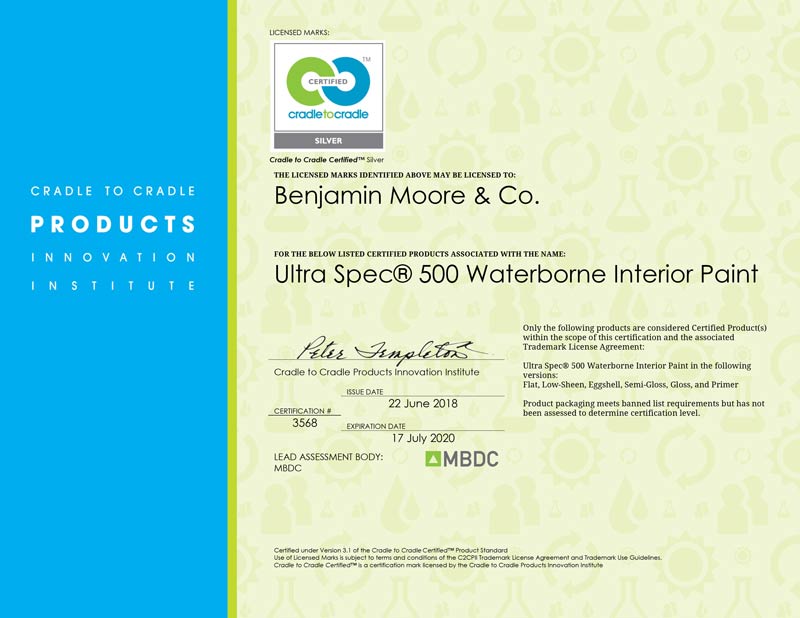This article reviews the building material red lists from the Living Building Challenge, Perkins & Will, and Cradle to Cradle. Healthy building materials are becoming a focus for clients and architecture firms as the understanding of material health impacts become more widespread. Material disclosure is not new to architecture, most professional organizations should be familiar with Health Product Declarations (HPDs) and Environmental Product Declarations (EPDs). These are a step in the right direction to healthy materials but they typically do not provide full material disclosure or restrict the use of products based on their chemical makeup.
What is a Material Red List?
The term red list is often associated with The Living Building Challenge’s Red List. Regardless of the rating system being used the goal of a red list is to identify the worst chemicals found in building materials so they can be eliminated from the supply chain. Red lists look beyond the end-user and aim to remove chemicals/materials that can cause health concerns in the sourcing of raw materials, fabrication, installation, and end-use.
Red lists can be a simple list of Chemical Abstracts Service (CAS) numbers, a unique number associated with a unique chemical substance, or a high-level summary that provides information/education around chemicals. Ultimately a good red list should always reference a CAS number to make it clear to which chemicals should be omitted from projects.
Why have a Red List?
As of September 2019, the US Environmental Protection Agency (EPA) has over 86,000 chemicals in its Toxic Substance Control Act (TSCA) Chemical Substance Control Inventory. With such a large number of chemicals in the industry it can be an overwhelming task for project teams to understand what chemicals are safe and which ones can cause harm to humans or the environment. In order to preserve the health of workers at all stages of a product's lifecycle and the health of our environment, owners, designers, contractors, and end-users need simple tools that can guide their decision making when selecting building materials.
The Red List, The Living Building Challenge
The Living Building Challenge (LBC) has one of the most comprehensive red lists and strictest material certifications in the industry. As of July 2019, the LBC Red List contains 815 unique chemicals across 18 major chemical categories. Their watch list has another 3,400+ chemical compounds that are being reviewed for potential negative health impacts. Whether looking to improve an architecture firm’s material library or pursuing a material rating system for a specific project, the LBC standard is one of the most comprehensive in the industry.
The International Living Futures Institute (ILFI), the organization that runs The Living Building Challenge, also runs the Declare program. Declare is a transparency label not unlike HPDs with the sole focus on material disclosure. The Declare database is a tool to find healthy building products without teams needing to do their own material research with manufactures.
The image below shows an example declare label, which confirms 100% material transparency and that the product is free from any hazardous materials.

The LBC Materials Petal certification has strict standards built around the Red List with an all or nothing approach. Unlike a points-based system to certification, ILFI requires project teams to provide material disclosure on all building materials. This process is made manageable by ILFI’s understanding of the limitations in the current building industry. They work with project teams on exceptions and mistakes made in material selection.
Materials Petal certification also requires teams to take serious efforts to reduce waste, improve material sourcing, use FSC wood products, advocate for National Stone Council participation, include salvaged materials and participate in additional LBC Petals.
The Living Building Challenge Red List is one of the most comprehensive and explicit red lists in the industry. In conjunction with the Declare database, architects and project teams can use this information to rebuild their material library with healthy alternatives. Owners and architects that pursue Living Building Certified or Petal Certified projects make a clear statement to the industry that material health is important to them in the built environment.
Perkins & Will Precautionary List
Perkins & Will have taken action for their firm to review material health for all their projects. In their efforts to bring increased attention to material health they have developed Transparency, an information site that hosts the Precautionary List. Transparency is not the basis for building certification, but instead is an education tool for architects. The Precautionary List is more than a simple list of CAS numbers and compound names like Living Building Challenge’s Red List. It is structured as an interactive web-based database comprised of 56 major categories.
Digging into each major category, Perkins & Will have provided an in-depth review broken out into the 4 following categories:
- Overview + Health
- Building Products
- Government + Industry
- and Substance Description
Transparency also includes a Watch List, which looks at emerging materials that need to be watched for health concerns. It is not associated with any material transparency labels and it does not provide information on any specific product nor does it provide healthy alternates. Transparency is a great resource for teams new to red lists and those pursuing healthy building materials without necessarily wanting to achieve a specific certification.
Cradle to Cradle
Cradle to Cradle is material/product certification. Certification is broken into five categories
- Material Health
- Material Reutilization
- Renewable Energy & Carbon Management
- Water Stewardship
- and Social Fairness
Cradle to Cradle’s Restricted Substance List (RSL), version 4 draft, has six major categories:
- Core RSL
- BN Materials
- Children's Products
- Formulated Consumer Products
- Textiles
- and Apparel & Jewelry
Core RSL and BN Materials have over 80 chemical groups with several CAS numbers for each chemical group.
For design teams, the list can be used as a reference when rebuilding material libraries. Cradle to Cradle Certified products eliminate much or all of the material research required of project teams to understand material health. Teams can make large steps in improving material health by simply selecting already certified products from the Cradle to Cradle library. Cradle to Cradle Certifications can also contribute to LEED credits.
The image below shows an example Cradle to Cradle certification. The Silver Certification is derived derived from the 5 categories listed above.

Teams should promote Cradle to Cradle to manufacturers who are pursuing healthier products and those who wish to be more transparent. Manufacturers can be incentivized to certify products with Cradle to Cradle Certified, Declare, and HPDs since verified healthy materials are seen as the preferred choice for owners and designers.
Applying Red Lists to Specific Projects
Pursuing a rating system certification associated with a red list can seem daunting. Building material red lists are very strict and their associated certifications are challenging, but the list makers also understand that there may not be a viable substitution in many cases. The end goal is always to build a healthier building or to make a better product.
There are many ways a project team can organize itself to be successful in the pursuit of healthier materials. In-depth material research and a more intentional approach to product selection can impact, cost, schedule, performance and design intent. These things should be addressed early and often to ensure success.
Transparency is the most important aspect of the design and construction process regardless if the team is pursuing a specific certification or simply striving to improve material health. Mistakes will be made and limits around cost, schedule and performance will be reached — certifying organizations understand this. In order for design teams to continually improve building health, they need to be honest and open about where they currently stand in order to take steps in the right direction.
Conclusion
Building material red lists are an always evolving tool to guide architects and project teams in a direction towards healthier buildings. There are many red lists in the industry and none of them are exactly the same. Red lists will continue to evolve as the attention around material health increases along with the science.
Teams should understand that red lists are not perfect but they are an excellent tool to simplify the complex problem around providing quality and healthy products for building. The ultimate goal is to remove hazardous chemicals from building materials, which protects everyone involved from sourcing of raw materials to the disposal of the finished product at the end of its life cycle. The common theme around material health and red lists is transparency. People can not make informed decisions around which products to use if they don’t know what they are made of. Promoting and demanding transparency around building products will drive the industry to make healthier building products and ultimately healthier buildings.


